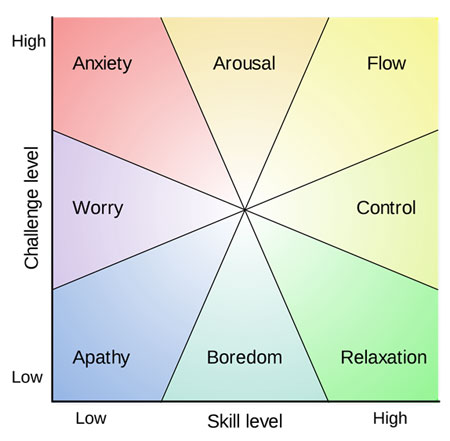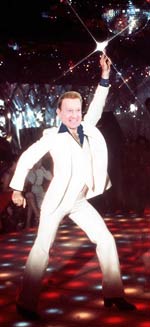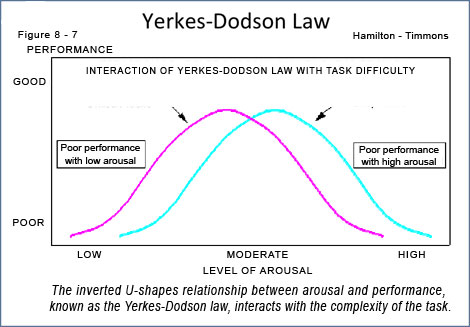Volume 2, Issue 8
Transmute negative emotion instantly
We continue our discussion of how to get into the Zone.
Gene Roddenberry was aware of the higher levels of life. He used the fictitious race of the Vulcans to demonstrate a species aware of these same higher levels, and who practiced severe control of their emotions. Presumably this would not only make them better people but would allow them to enter the supernatural-seeming Flow State, the scientific term coined by Czikszentmihalyi for the Zone.
The Vulcans were not very advanced in their understanding of emotions, or they would not have tried to control them. “Control” connotes stifling emotions, suppressing them, thus containing and compressing dangerous pressures that will then only rupture out somewhere doing even more damage.
The Human Effectiveness Institute agrees with the Vulcans that negative emotions are something you want to cut off ASAP to return to a balanced state of objective equipoise. Until that happens you are sucked into the emotions and mentally compressed — as if caught in a premeditated trap where your brain’s ability to think clearly is being squeezed in a vise-like grip by a giant clam, the clam being the emotions. They are definitely formidable opponents if one tries to squeeze them down. Negative emotions instead squeeze your cognitive part down. (Not so with positive emotions of course.)
A frontal assault against the emotions misses the point entirely since your emotions are the clearest expression of what you really want. Why would you want to not receive that valuable information?
Channeling the emotions is what’s needed here. Get aside the runaway horse and grab and steer the reins. Extract all the understanding from the emotional message and the messenger will relax.
Use of mental metaphors is a valuable part of the Institute’s IP (Intellectual Property) because they work. (That IP belongs to the public and our job is to get it all out to everyone in the most effective way.) Parts of the mind behave like animals, parts behave like robots, and other parts behave like they are the truest expression of your self’s spirit. Metaphors communicate effectively with all those parts at once, getting them all on the same page.
In the prior post we talked about the autotelic nature of behavior one engages in when in the Flow state, or the Zone. This behavior is being engaged in as an end in itself, because the player enjoys that behavior and makes himself/herself better and better at it. It’s fun. Winning is not the point. Glory and money and power and sex and big ego are not the point.
So you see the Zone also has an axiological basis. It’s about the values you have. Being drawn into obsessive fixation on the usual things listed above stops the chance for Flow entirely. You can’t serve two masters — Flow is all about unity. You can’t be lying to yourself and saying you don’t care about egoism or materialism — you actually have to have transcended those things at least during periods of Flow. If you rarely transcend those things you will rarely experience Flow, and vice versa.
Flow happens when your positive emotion is focused in the present, in the exact now — you are fully engaged in the moment, all of your mind is there, wrong decisions (if you make them) float away with no more than an instant’s regret, and you don’t go into a spiral of wrong decisions driven by anger at yourself, which of course takes you out of Flow.
If your positive emotions are focused in the past or future but not in the now, that is the very definition of how not to get into Flow, because your behavior is not autotelic — you are not doing the present activity as an end in itself.
Negative emotions arise when one is attached to something and feels thwarted or about to be thwarted in getting the thing one is attached to. They also arise when one is blatantly attacked — the time you really need to be in the Zone — so it is good to learn how to rechannel the emotional energies back into objectivity. This requires a degree of emotional intelligence and menschness.
When you find you can’t quickly snap back and you get sucked into a downward emotional spiral, ask yourself what is the thing you’d have to give up and not care about in order to relax naturally? Experiment with giving that thing up mentally — what if you lose, not a big deal — and then go ahead into the action with a sense of humor and fatalistic acceptance for the given fact that whatever is happening is happening.
You may say right now that losing is a big deal but you’ll be surprised how repetition of the exercise makes you stronger at being able to transmute negative emotions into self-understanding, clarity, and action focus. You can learn fatalistic objectivity — accepting “what is” and making the best of it — just the way you learned everything else, with your mind. That part is not supernatural at all. It has more tricks up its sleeve than any of us have used, and Flow is about discovering more of them.
Best to all,
Bill



